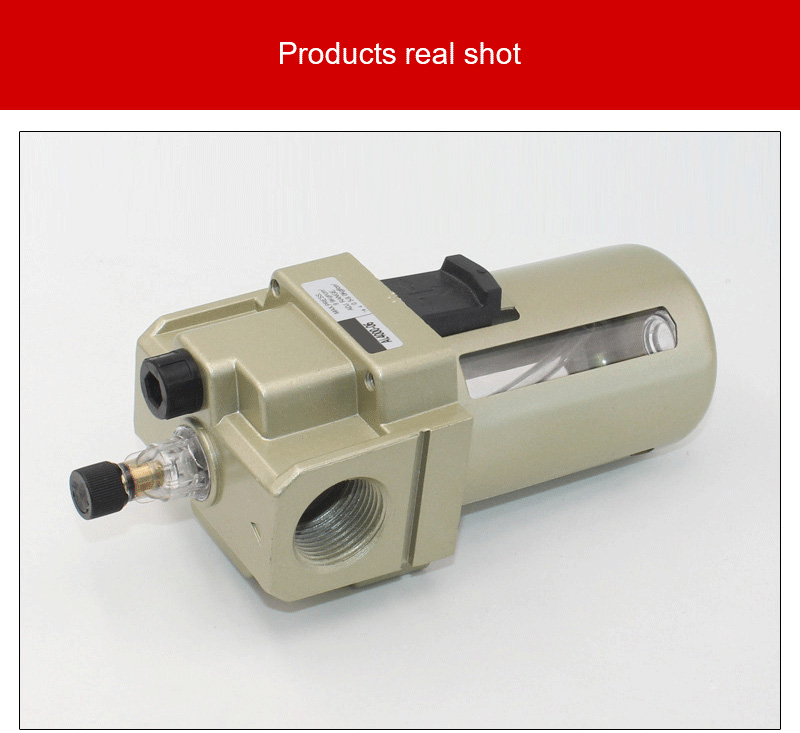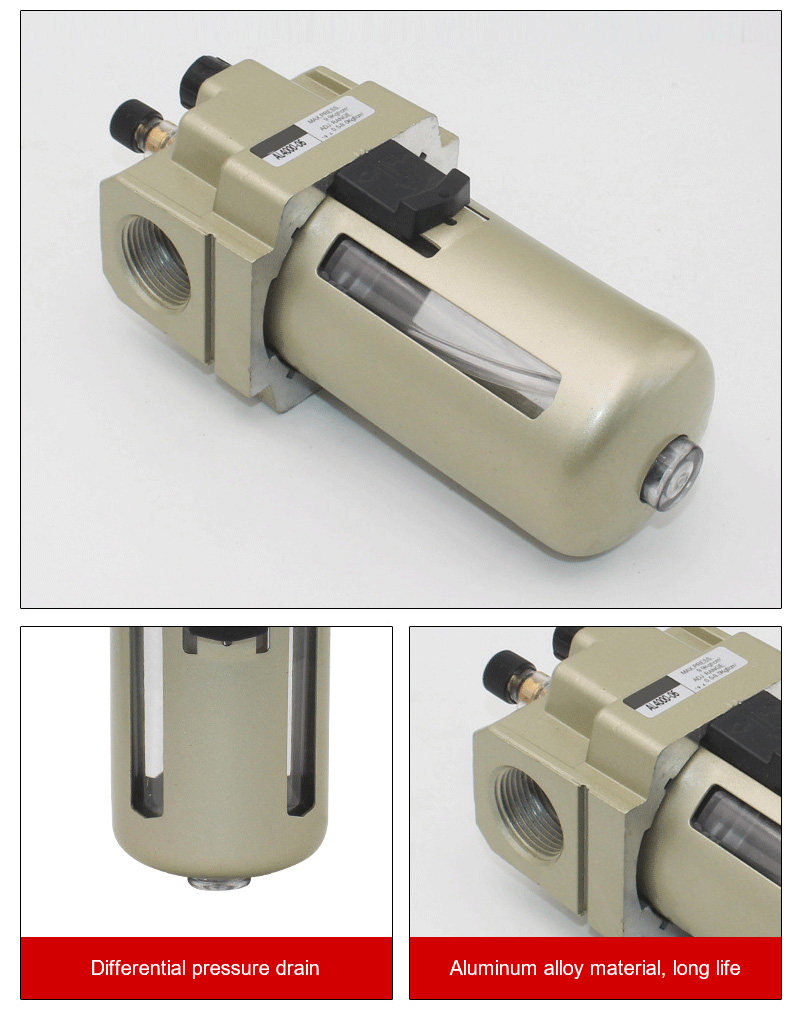1. How to choose the flow size?
Select the appropriate flow rate according to the gas consumption of the downstream equipment. In general, we choose a filter with a slightly larger gas consumption than the actual gas consumption, so as to avoid insufficient gas consumption and affect the operation of the equipment, and there is no need to choose a filter with an excessive flow rate, which will cause waste. (Refer to the flow table below for the specific flow of the product)
Air source processor model | Interface thread | flow |
AC2000/AFC2000 | 1/4=2 minutes | 500L/min |
AR/AFR/AF/AL2000 | 1/4=2 minutes | 500L/min |
I BC/BFC/BF/BR/BFR/BL2000 | 1/4=2 minutes | 2000L/minute |
BC/BFC/BF/BR/BFR/BL3000 | 3/8=3 minutes | 3000L/min |
I BC/BFC/BF/BR/BFR/BL4000 | 1/2=4 minutes | 4000L/minute |
2. How to choose the filtration precision of the filter element?
The pore diameter of the filter element determines the filtration accuracy of the filter. Because the downstream equipment has different requirements on the quality of the gas source. For example, metallurgy, steel and other industries do not have very high requirements on gas quality, so you can choose a filter with a larger pore size. However, industries such as medicine and electronics have high requirements for gas quality. We can choose a precision filter with a small pore size.
3. How to choose the drainage method?
The drainage methods of our air source processor are divided into automatic drainage, differential pressure drainage and manual drainage. Automatic drainage can be divided into two kinds of pressure difference drainage: no-pressure opening and no-pressure closing.
Occasion of use: Fully automatic drainage is generally suitable for pipelines that are inconvenient for personnel to control, such as high, narrow places where people do not often reach, and pipelines where downstream gas consumption cannot be stopped. Differential pressure drainage is generally suitable for pipelines that are easily controlled by personnel, such as the outside of the machine, the accessories of the console, and the pipelines where the downstream gas consumption can be suspended.
Three different drainage methods
Manual drainage: Twist the plastic head of the cup by hand, and the "O" direction is for drainage, after the drainage is completed Tighten to "S"
(A) Differential pressure drainage: Automatic drainage when there is no air intake, and the drain port needs to be pushed up manually when air intake to drain
(D) Automatic drainage: When the water level in the cup rises, the piston will automatically lift up to realize the drainage function
(2000D) Differential pressure drainage: During manual drainage, the manual button can be pressed to automatically drain the water, and the drainage is completed. Rear assembly can be reset automatically


Next : SMC AC4010-04
Previous : SMC AW4000-04

